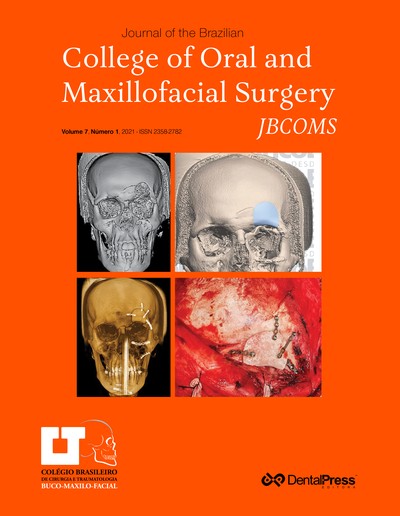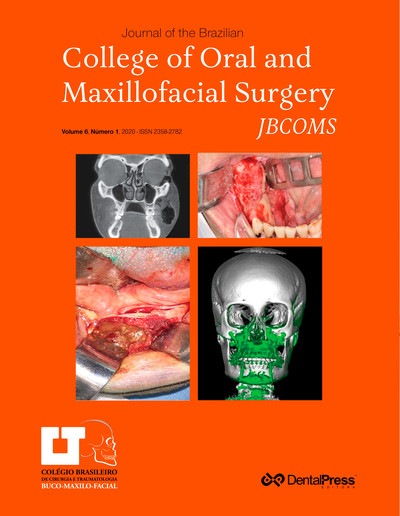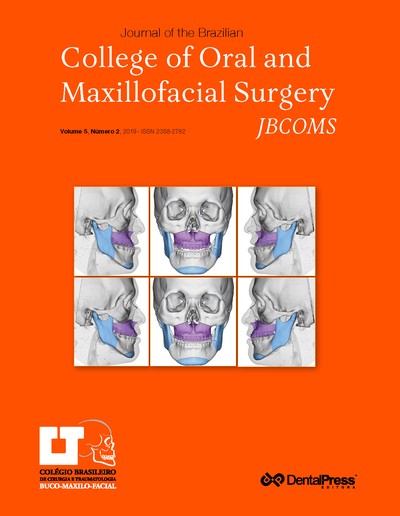
Analysis of linear transverse measurements af- ter SARPE
MARCELO MINHARRO CECCHETTI, WLADIMIR GUSHIKEN DE CAMPOS, TATIANE FERRARI, CAMILLA VIEIRA ESTEVES, MARIA DA GRAÇA NACLÉRIO-HOMEM, CELSO AUGUSTO LEMOS
Objective: To analyze the effectiveness of surgically assisted rapid palatal expansion (SARPE) in gaining horizontal maxillary distance. Methods: Eleven patients with transverse maxillary deficiency submitted to SARPE participated in the study. Study models were obtained before and after surgery. The transverse measurements of the maxillary models were performed between the canine cusps, palatal cusps of the first premolars, and buccal cusps of the first upper molars. These measurements were performed before and after SARPE. Results: Regarding the total number of turns applied to Hyrax and the average gain in maxillary transverse distance, there was a statistically significant correlation (p = 0.006) between the total number of turns of the device and the average gain in the region. Regarding the canine region (p = 0.45) and molar region (p = 0.925), there was no statistically significant correlation between the number of turns in the device and the obtained distance. Conclusion: The average gain in maxillary transverse distance was statistically significant for the canine, premolar and molar regions and arch perimeter. There was a statistically significant correlation between the total number of device activations and the distance gained in the premolar region.
Keywords: Palatal expansion technique. Orthodontics. Orthodontics, corrective. Orthodontics, interceptive.
How to cite: Cecchetti MM, Campos WG, Ferrari T, Esteves CV, Naclério-Homem MG, Lemos CA. Analysis of linear transverse measurements after SARPE. J Braz Coll Oral Maxillofac Surg. 2020 Sept-Dec;6(3):21-9.
Thursday, May 02, 2024 21:09










